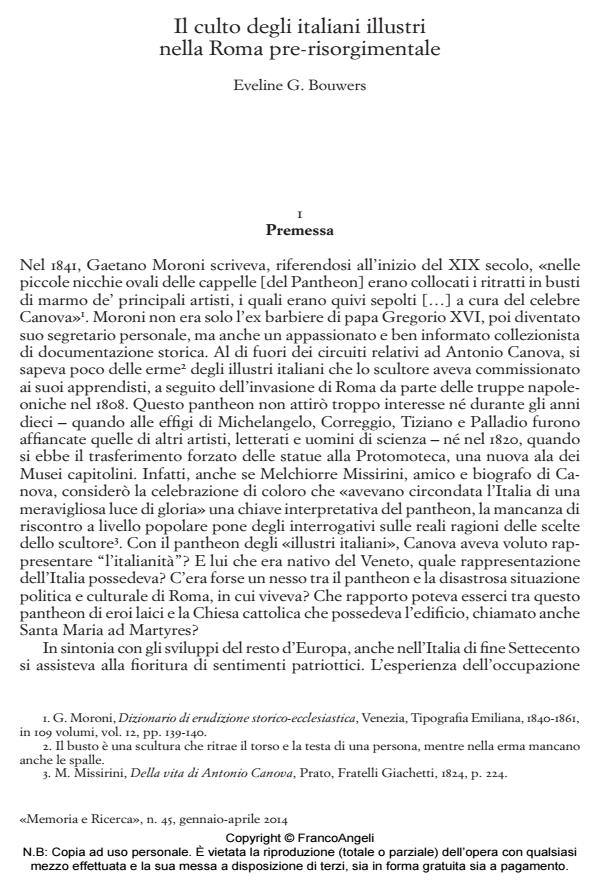Il culto degli italiani illustri nella Roma pre-risorgimentale
Titolo Rivista MEMORIA E RICERCA
Autori/Curatori Eveline G. Bouwers
Anno di pubblicazione 2014 Fascicolo 2014/45 Lingua Italiano
Numero pagine 30 P. 127-156 Dimensione file 308 KB
DOI 10.3280/MER2014-045008
Il DOI è il codice a barre della proprietà intellettuale: per saperne di più
clicca qui
Qui sotto puoi vedere in anteprima la prima pagina di questo articolo.
Se questo articolo ti interessa, lo puoi acquistare (e scaricare in formato pdf) seguendo le facili indicazioni per acquistare il download credit. Acquista Download Credits per scaricare questo Articolo in formato PDF

FrancoAngeli è membro della Publishers International Linking Association, Inc (PILA)associazione indipendente e non profit per facilitare (attraverso i servizi tecnologici implementati da CrossRef.org) l’accesso degli studiosi ai contenuti digitali nelle pubblicazioni professionali e scientifiche
Well before the Risorgimento’s cult of heroes took a flight, sculptor Antonio Canova commissioned a series of busts of ‘illustrious Italians’ for the ancient Pantheon in Rome. Started in 1809, when Rome was under French control, the project was developed in agreement with the Roman Curia until, in 1820, Pope Pius VII ordered its removal to the Capitoline Museums. This article probes the origins, form and function of the Canovian pantheon. It analyses the sculptor’s incentives in commemorating artists, scientists and men of letters of Italy’s past, and queries the project’s public reception. Moreover, it evaluates the selection of men and contrasts these to Canova’s predilections, both artistic and personal. Finally, it assesses the pantheon’s impact on the commemoration of illustrious men in post-1848 Rome, specifically in relation to the pantheons on the Pincian and Janiculum hills.;
Keywords:Italianita, Patriotism, heroism, Antonio Canova, Pantheon, Rome
Eveline G. Bouwers, Il culto degli italiani illustri nella Roma pre-risorgimentale in "MEMORIA E RICERCA " 45/2014, pp 127-156, DOI: 10.3280/MER2014-045008